- Joined
- Jan 6, 2013
- Messages
- 5,574
- Reaction score
- 11,213
1. The History
This small ganister mine can be found high up in Wharnecliffe woods, north of Oughtibridge, high above a valley created by the erosion of the River Don. On the outcrops on the western-facing slopes of the River Don, there were a number of small ganister mines here. Ganister itself is a close-grained, quartzose sandstone found in the coal measures of northern England. Consisting of over 90% silica with traces of alumina and lime, it was used in the manufacture of silica bricks, which were typically used to line furnaces in the iron and steel making process.
The mine entrance is located at the side of Waterfall Clough, a small stream that flows south-west down the slope of the woods into the River Don. The mine is most likely to have been owned by the Oughtibridge Silica Fire Brick company due south of the mine, located 0.6km south of the mine as the bird flies. The company was founded in 1856 before Gannister was widely used, so initially used other refractory materials such as pot clay.
The lofty location of the mine allowed the gravity of the tramline to take the ganister down the slope to the Great Central railway line between Manchester and Sheffield. Opened in 1845, this then facilitated the short remaining leg to the works themselves. Dropping the “Oughtibridge” from its name, the works and mines prospered and found themselves at the centre of particular strategic influence during the second world war. In 1947 the works were taken over by the Steetley company in 1947. In the 1980s the southern half of the former Silica Fire Brick site was redeveloped for housing while the remaining north half was taken over by Intermet Refractory Products Ltd who still occupy the site today.
In terms of our little mine, its hard to determine when it opened and when it closed. However best guesses are that it opened in the 1860s and closed sometime around the finish of World War Two.
Old O/S map showing (1) the location of the mine, (2) the tramway linking the mine with the Great Central Railway and (3) Silica Fire Brick Works:
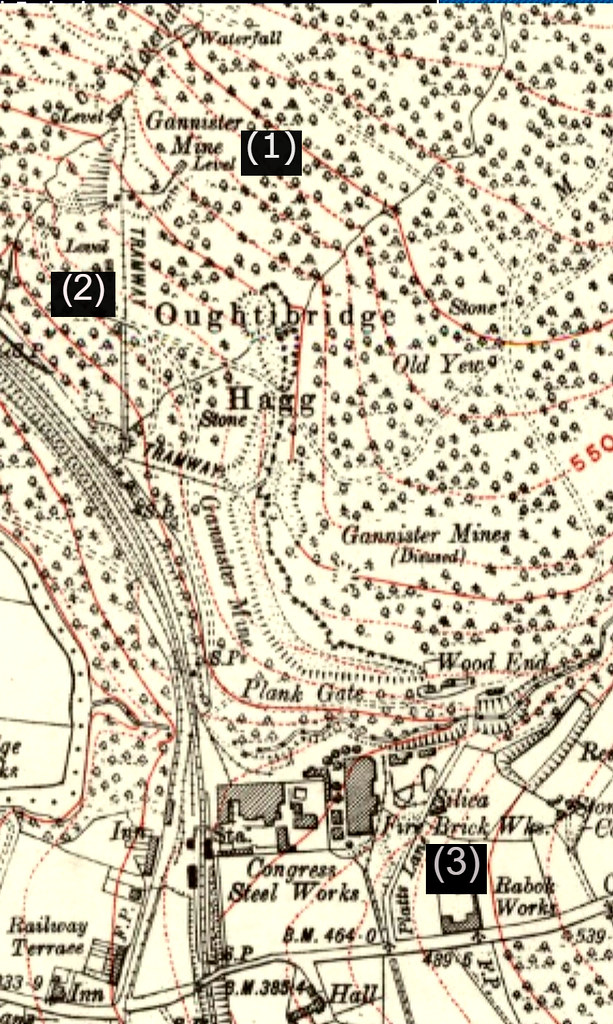 20200816_191725 by HughieDW, on Flickr
20200816_191725 by HughieDW, on Flickr
Silica Fire Brick Works, pictured in 1910:
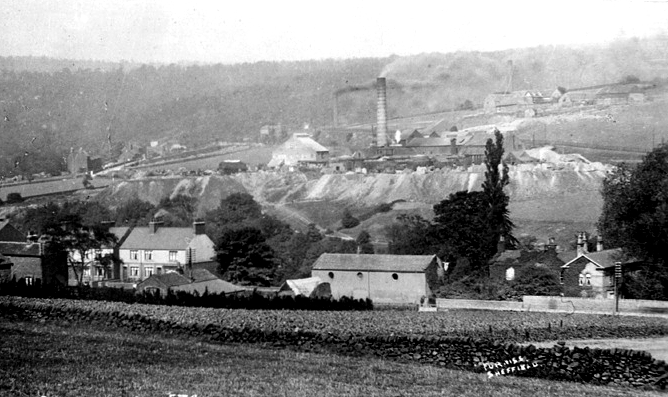 20200819_112437 by HughieDW, on Flickr
20200819_112437 by HughieDW, on Flickr
An advert from the 1960s for Oughtibridge silica bricks:
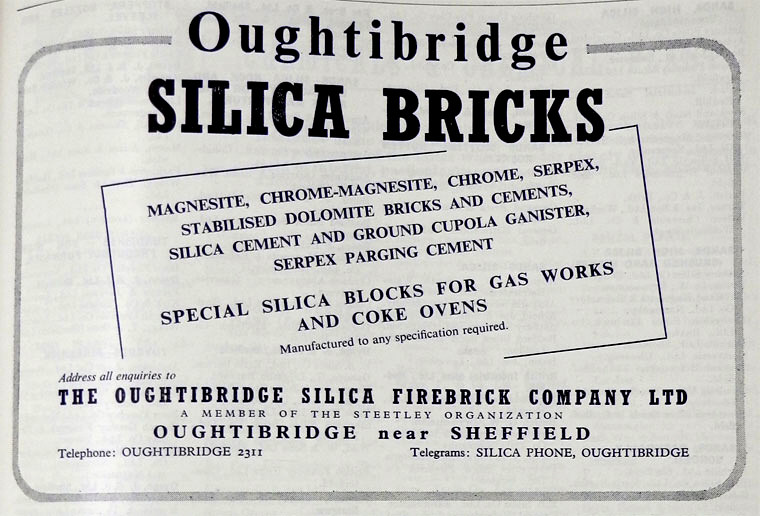 Oughtibridge ad 1960 by HughieDW, on Flickr
Oughtibridge ad 1960 by HughieDW, on Flickr
2. The Explore
All credit has to go to @tarkovsky for this one. Without him first finding this place and then giving us a really accurate pin, we’d never have found it. It’s up a pretty steep hill and it’s not the easiest place to find, especially when it’s tipping down. Maps indicate there are 3 separate adits in total here. One no one appears to have found. Of the other two, the larger one has been blocked with backfill. This leaves the small adit we explored. It also has had its entrance back-filled in the past; however, a small landslide appears to have exposed the top of the arched brick adit entrance. The gap is big enough to squeeze into the arched initial chamber. Straight ahead at the end there appears to have been a rockfall. However, at the back to the left is an aperture small enough to crawl through that takes you into a larger chamber. The far end is flooded and goes round the corner to the left before reaching a dead end.
It’s a small little mine but we spent the best part of an hour in here taking pictures and enjoying the peace and quiet before trekking back down the hill.
3. The Pictures
Most definitely NOT picture heavy as it’s only a small little mine.
Outside looking in:
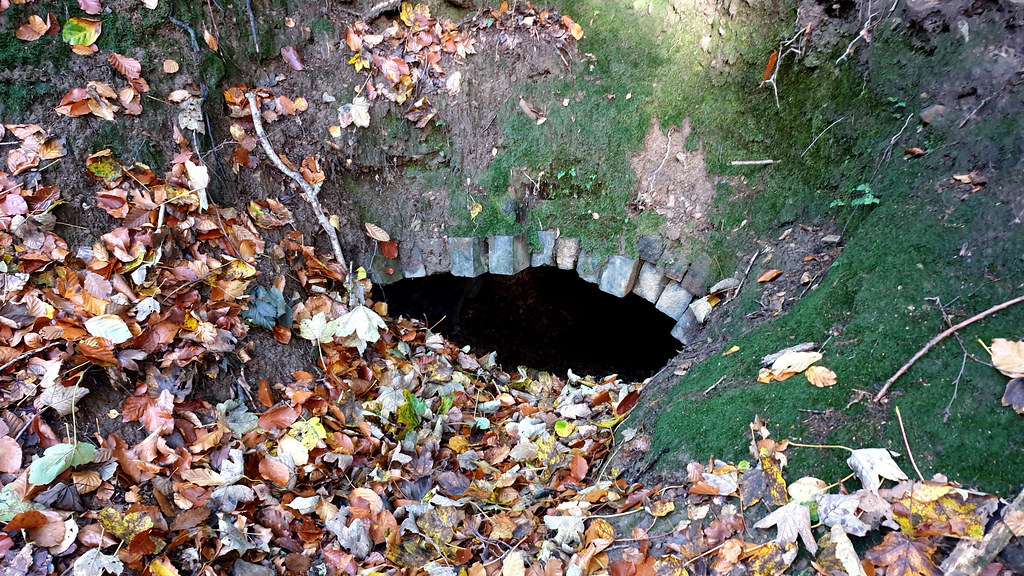 Wharncliffe 02 by HughieDW, on Flickr
Wharncliffe 02 by HughieDW, on Flickr
And on the inside looking out:
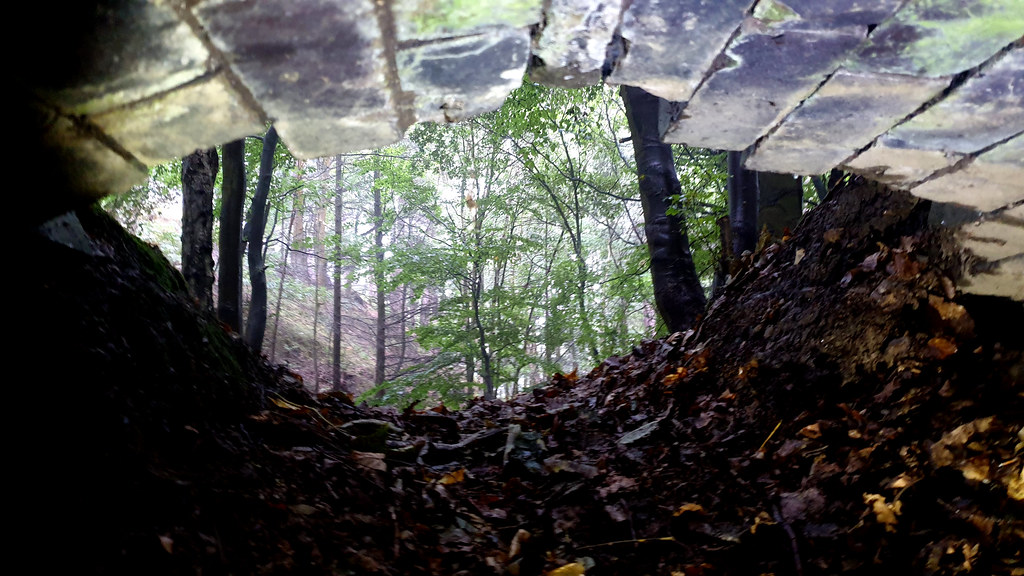 Oughtibridge mine 01 by HughieDW, on Flickr
Oughtibridge mine 01 by HughieDW, on Flickr
The arched entrance in full:
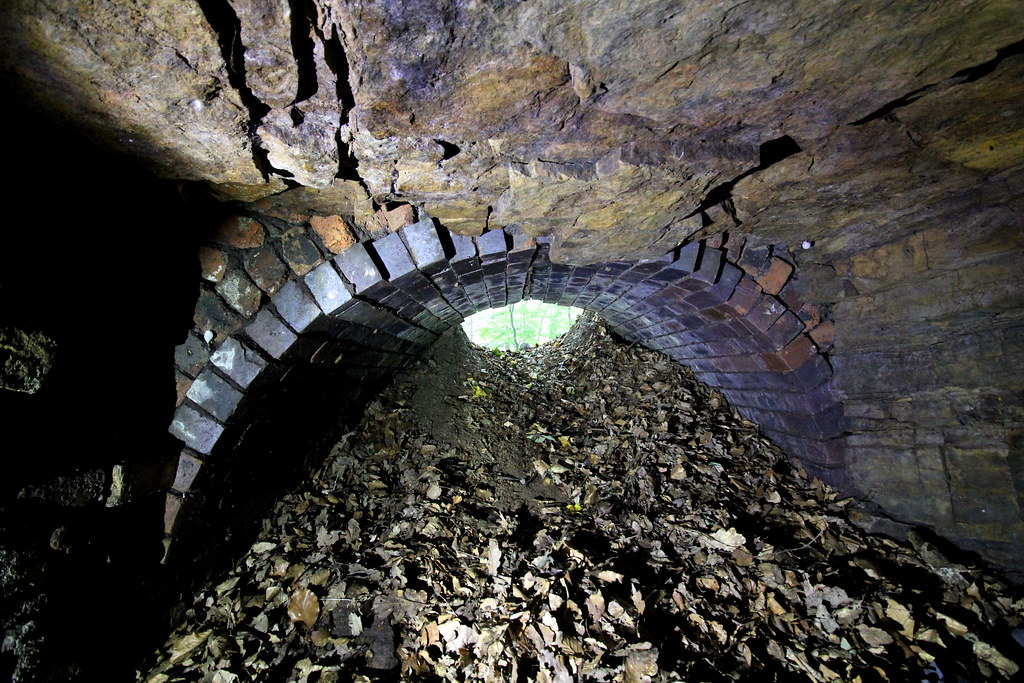 img8217 by HughieDW, on Flickr
img8217 by HughieDW, on Flickr
There are some pretty coloured rocks:
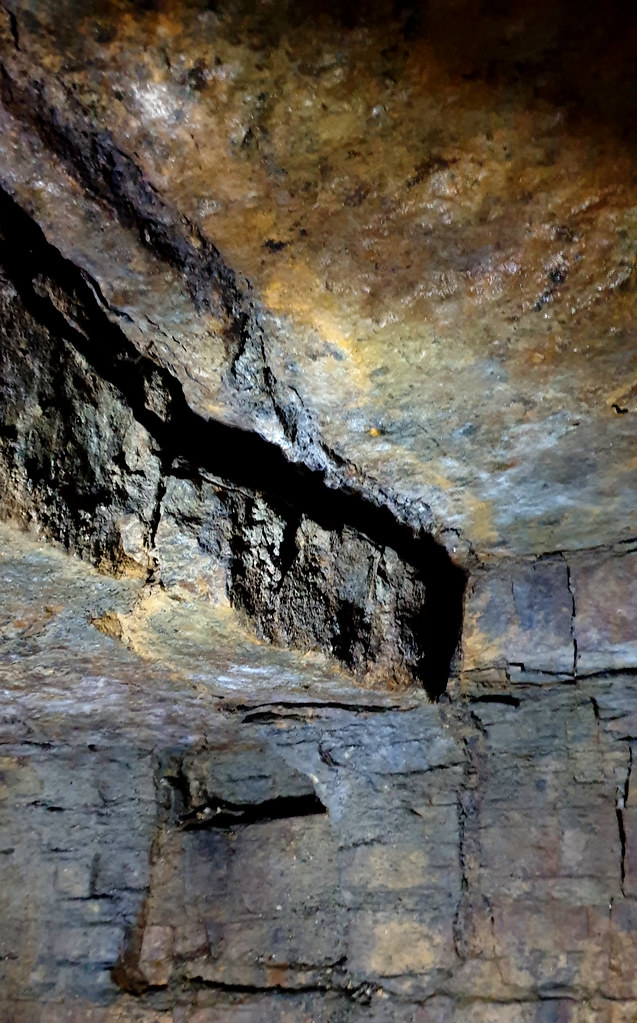 Oughtibridge mine 03 by HughieDW, on Flickr
Oughtibridge mine 03 by HughieDW, on Flickr
You can see the small coal seam on this one:
 Oughtibridge mine 02 by HughieDW, on Flickr
Oughtibridge mine 02 by HughieDW, on Flickr
Small aperture to the right once you’ve squeezed into the main part of the mine:
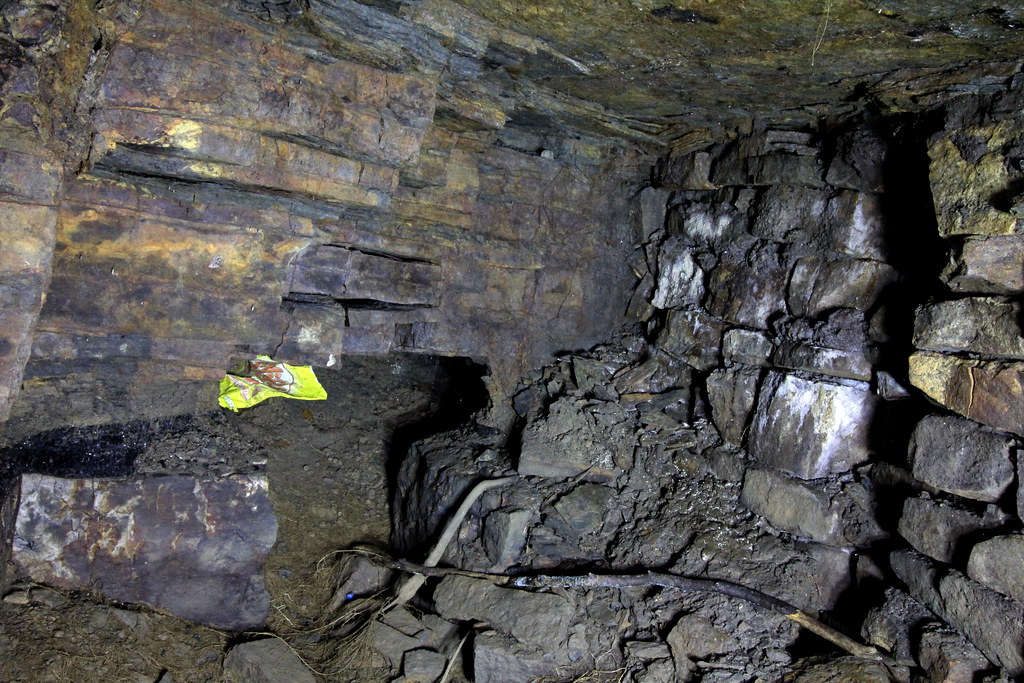 img8212 by HughieDW, on Flickr
img8212 by HughieDW, on Flickr
Looking down the second chamber:
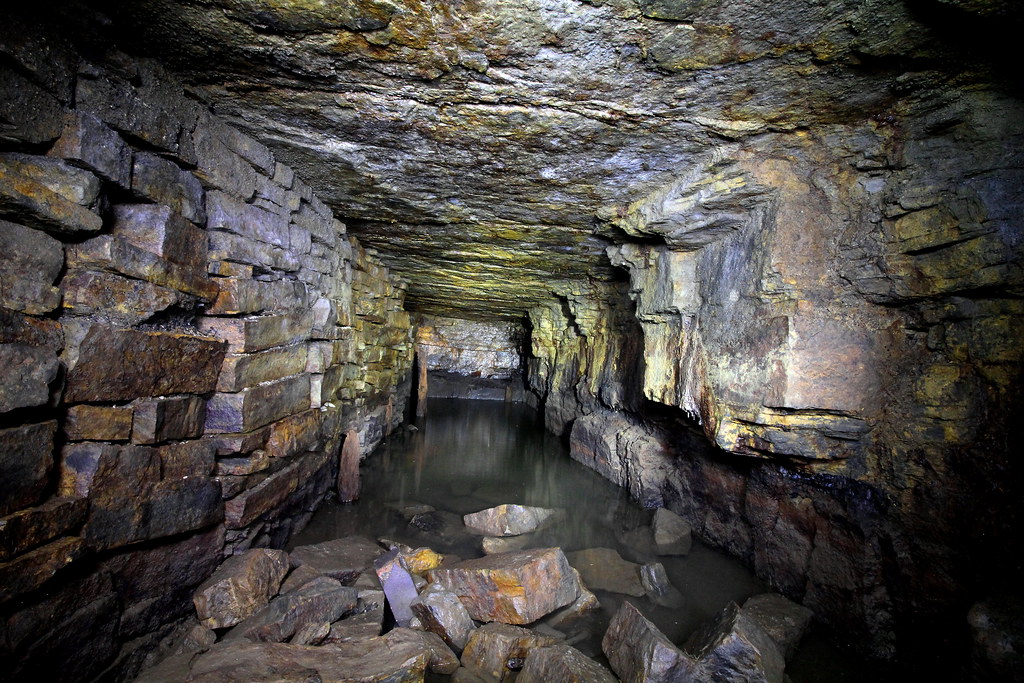 img8206 by HughieDW, on Flickr
img8206 by HughieDW, on Flickr
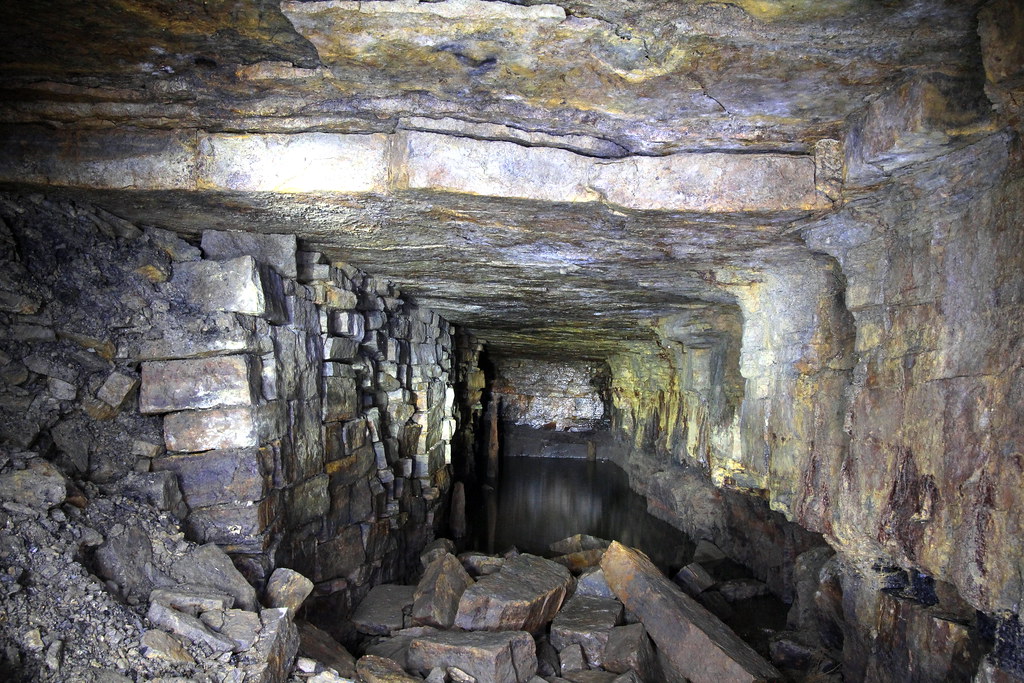 img8213 by HughieDW, on Flickr
img8213 by HughieDW, on Flickr
Note the rotten former wooden roof supports to the left:
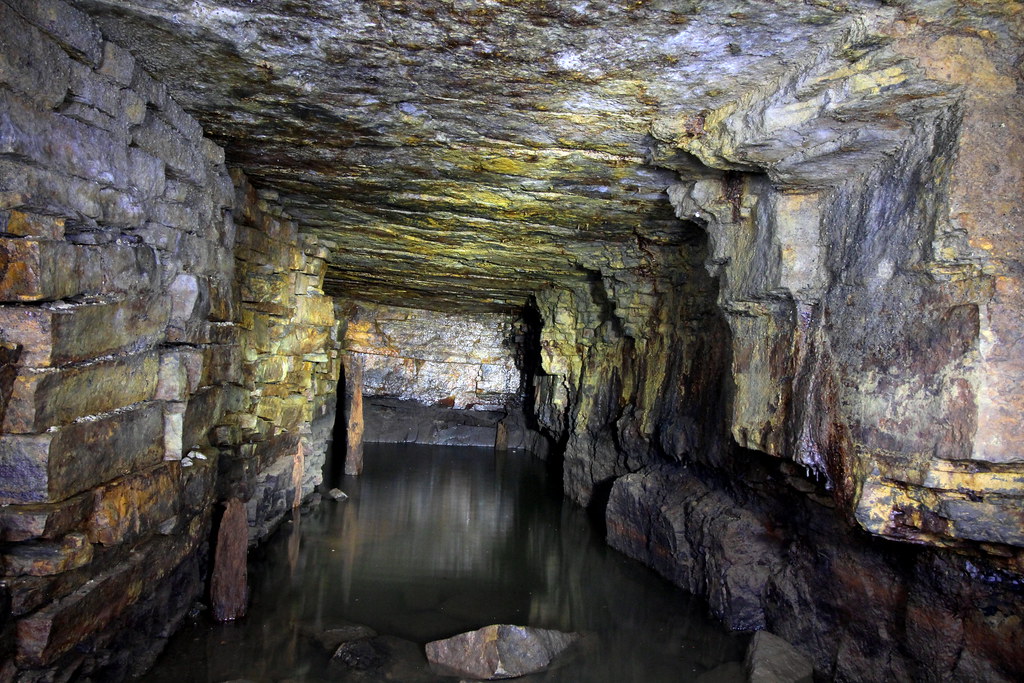 img8207 by HughieDW, on Flickr
img8207 by HughieDW, on Flickr
Looking back to the 1st chamber and exit:
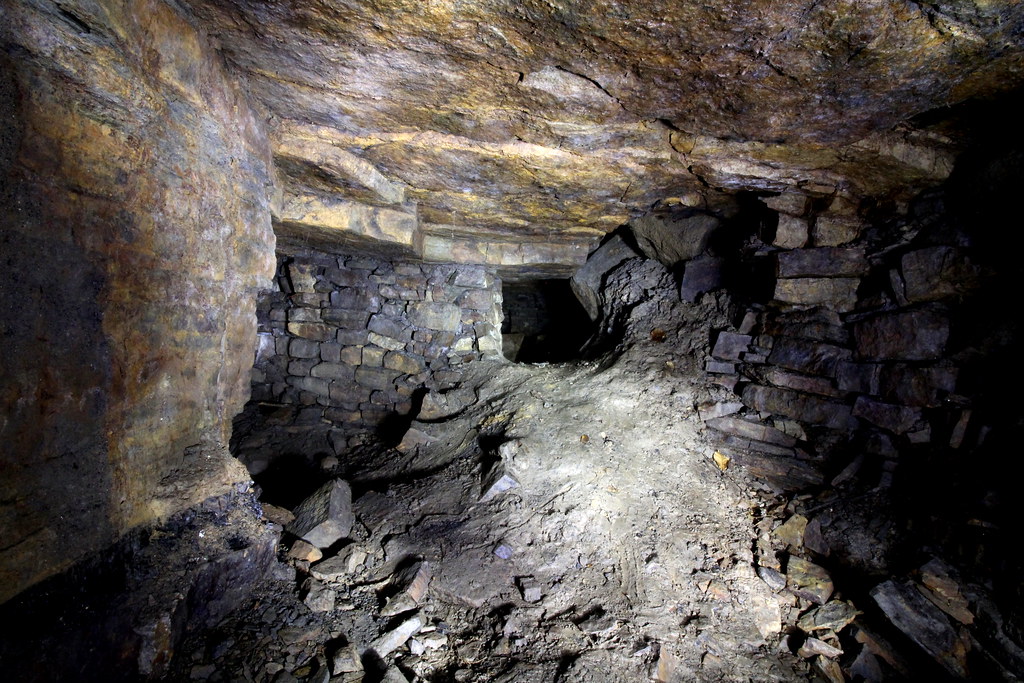 img8202 by HughieDW, on Flickr
img8202 by HughieDW, on Flickr
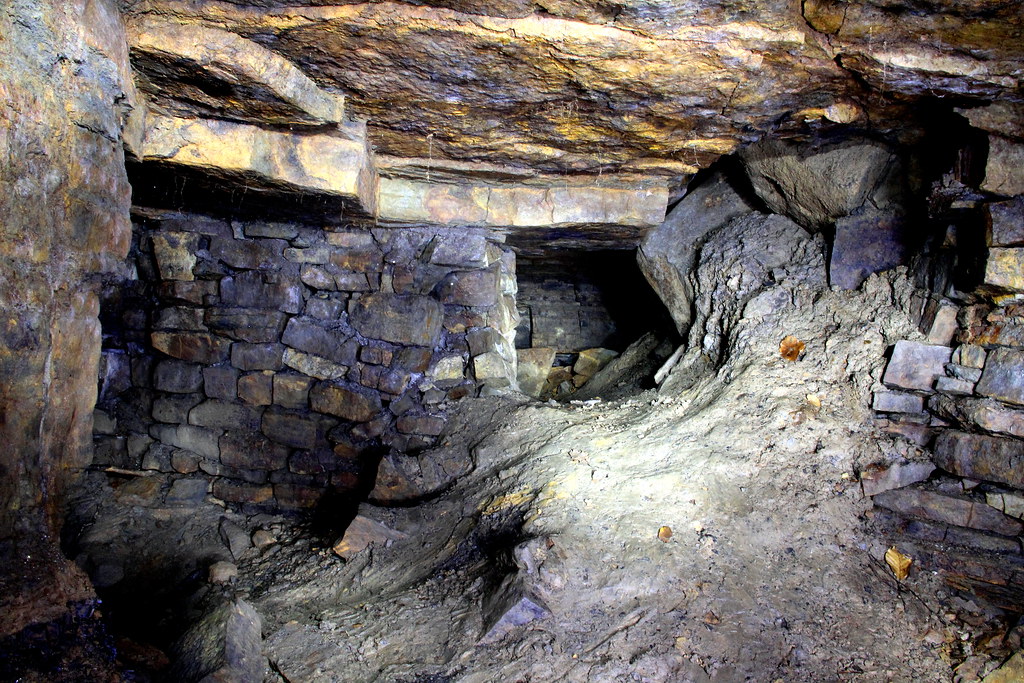 img8200 by HughieDW, on Flickr
img8200 by HughieDW, on Flickr
Struggled getting decent pictures of the flooded section to the left:
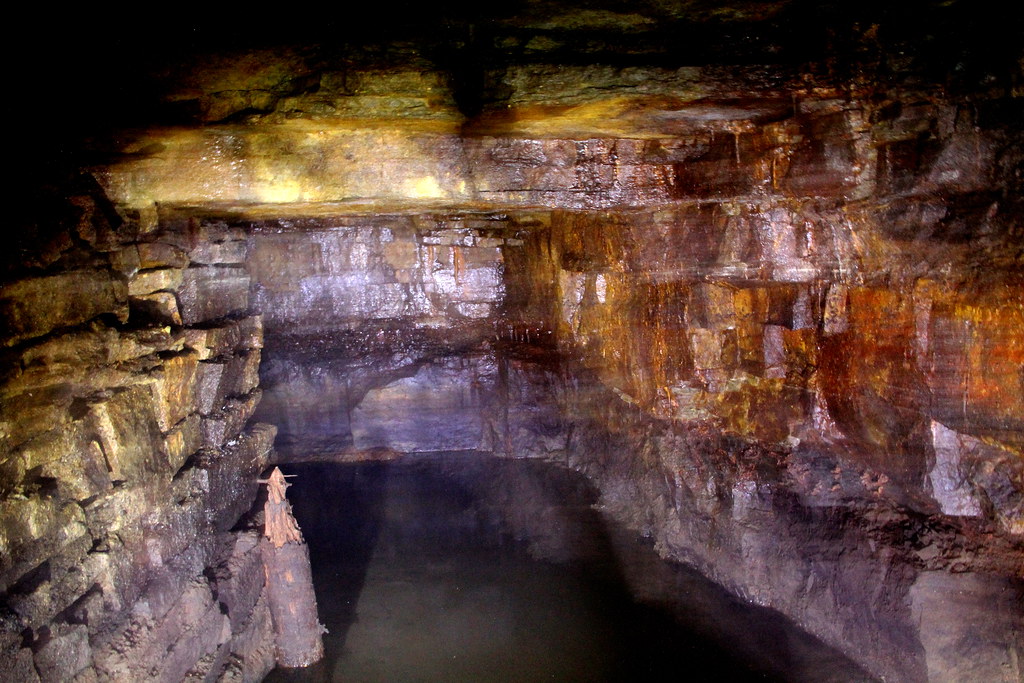 img8183 by HughieDW, on Flickr
img8183 by HughieDW, on Flickr
This small ganister mine can be found high up in Wharnecliffe woods, north of Oughtibridge, high above a valley created by the erosion of the River Don. On the outcrops on the western-facing slopes of the River Don, there were a number of small ganister mines here. Ganister itself is a close-grained, quartzose sandstone found in the coal measures of northern England. Consisting of over 90% silica with traces of alumina and lime, it was used in the manufacture of silica bricks, which were typically used to line furnaces in the iron and steel making process.
The mine entrance is located at the side of Waterfall Clough, a small stream that flows south-west down the slope of the woods into the River Don. The mine is most likely to have been owned by the Oughtibridge Silica Fire Brick company due south of the mine, located 0.6km south of the mine as the bird flies. The company was founded in 1856 before Gannister was widely used, so initially used other refractory materials such as pot clay.
The lofty location of the mine allowed the gravity of the tramline to take the ganister down the slope to the Great Central railway line between Manchester and Sheffield. Opened in 1845, this then facilitated the short remaining leg to the works themselves. Dropping the “Oughtibridge” from its name, the works and mines prospered and found themselves at the centre of particular strategic influence during the second world war. In 1947 the works were taken over by the Steetley company in 1947. In the 1980s the southern half of the former Silica Fire Brick site was redeveloped for housing while the remaining north half was taken over by Intermet Refractory Products Ltd who still occupy the site today.
In terms of our little mine, its hard to determine when it opened and when it closed. However best guesses are that it opened in the 1860s and closed sometime around the finish of World War Two.
Old O/S map showing (1) the location of the mine, (2) the tramway linking the mine with the Great Central Railway and (3) Silica Fire Brick Works:
 20200816_191725 by HughieDW, on Flickr
20200816_191725 by HughieDW, on FlickrSilica Fire Brick Works, pictured in 1910:
 20200819_112437 by HughieDW, on Flickr
20200819_112437 by HughieDW, on FlickrAn advert from the 1960s for Oughtibridge silica bricks:
 Oughtibridge ad 1960 by HughieDW, on Flickr
Oughtibridge ad 1960 by HughieDW, on Flickr2. The Explore
All credit has to go to @tarkovsky for this one. Without him first finding this place and then giving us a really accurate pin, we’d never have found it. It’s up a pretty steep hill and it’s not the easiest place to find, especially when it’s tipping down. Maps indicate there are 3 separate adits in total here. One no one appears to have found. Of the other two, the larger one has been blocked with backfill. This leaves the small adit we explored. It also has had its entrance back-filled in the past; however, a small landslide appears to have exposed the top of the arched brick adit entrance. The gap is big enough to squeeze into the arched initial chamber. Straight ahead at the end there appears to have been a rockfall. However, at the back to the left is an aperture small enough to crawl through that takes you into a larger chamber. The far end is flooded and goes round the corner to the left before reaching a dead end.
It’s a small little mine but we spent the best part of an hour in here taking pictures and enjoying the peace and quiet before trekking back down the hill.
3. The Pictures
Most definitely NOT picture heavy as it’s only a small little mine.
Outside looking in:
 Wharncliffe 02 by HughieDW, on Flickr
Wharncliffe 02 by HughieDW, on FlickrAnd on the inside looking out:
 Oughtibridge mine 01 by HughieDW, on Flickr
Oughtibridge mine 01 by HughieDW, on FlickrThe arched entrance in full:
 img8217 by HughieDW, on Flickr
img8217 by HughieDW, on FlickrThere are some pretty coloured rocks:
 Oughtibridge mine 03 by HughieDW, on Flickr
Oughtibridge mine 03 by HughieDW, on FlickrYou can see the small coal seam on this one:
 Oughtibridge mine 02 by HughieDW, on Flickr
Oughtibridge mine 02 by HughieDW, on FlickrSmall aperture to the right once you’ve squeezed into the main part of the mine:
 img8212 by HughieDW, on Flickr
img8212 by HughieDW, on FlickrLooking down the second chamber:
 img8206 by HughieDW, on Flickr
img8206 by HughieDW, on Flickr img8213 by HughieDW, on Flickr
img8213 by HughieDW, on FlickrNote the rotten former wooden roof supports to the left:
 img8207 by HughieDW, on Flickr
img8207 by HughieDW, on FlickrLooking back to the 1st chamber and exit:
 img8202 by HughieDW, on Flickr
img8202 by HughieDW, on Flickr img8200 by HughieDW, on Flickr
img8200 by HughieDW, on FlickrStruggled getting decent pictures of the flooded section to the left:
 img8183 by HughieDW, on Flickr
img8183 by HughieDW, on Flickr



